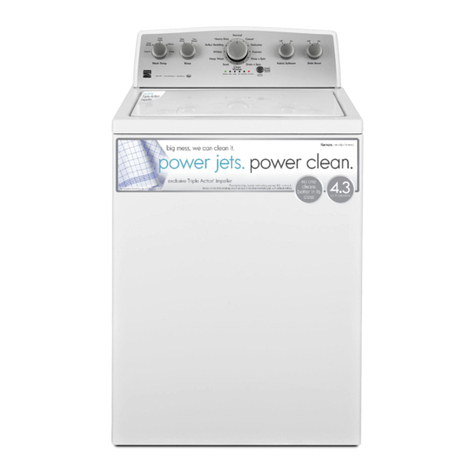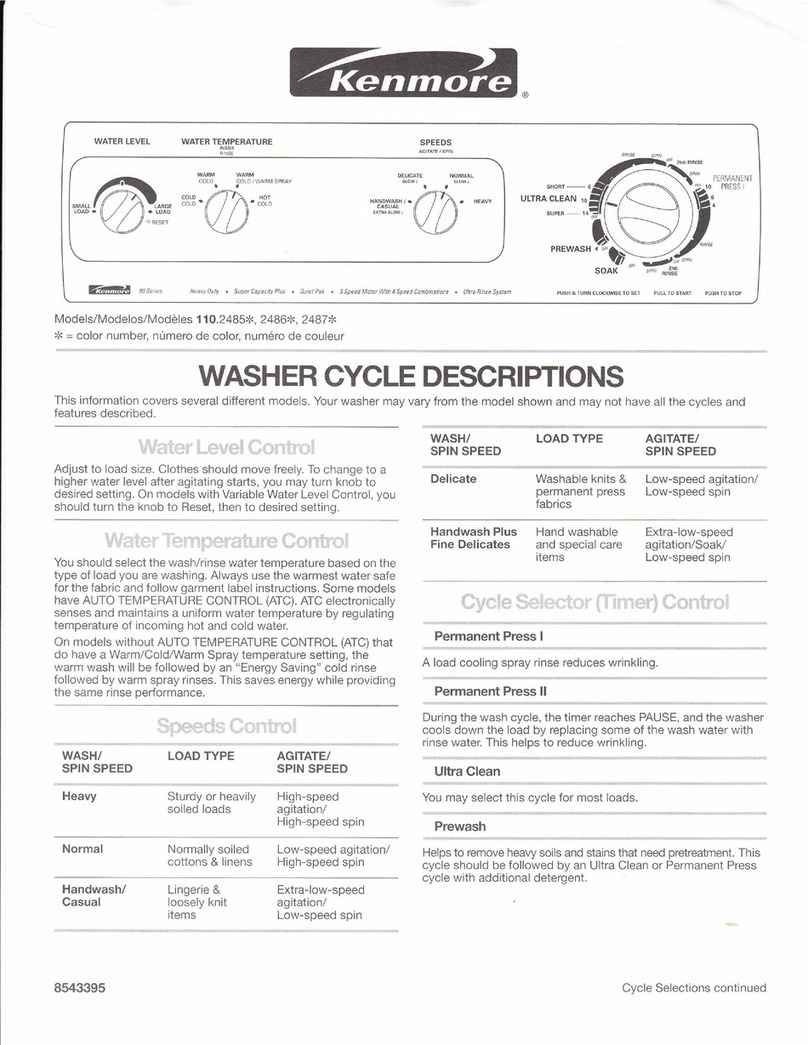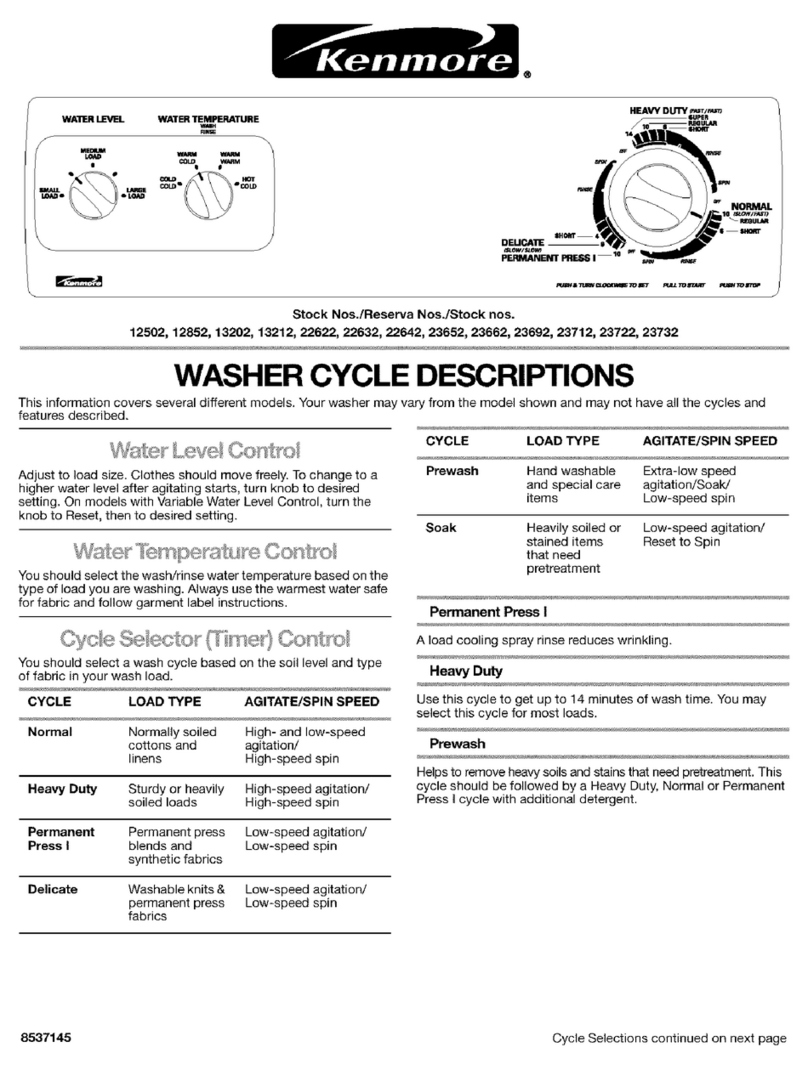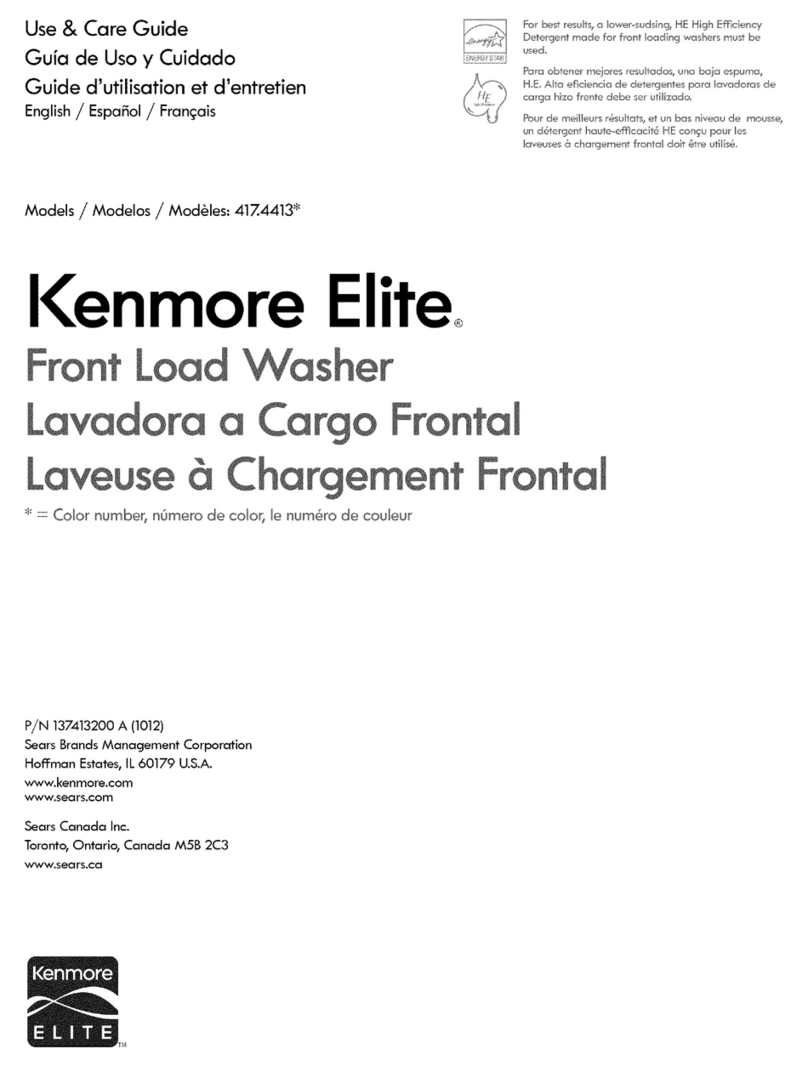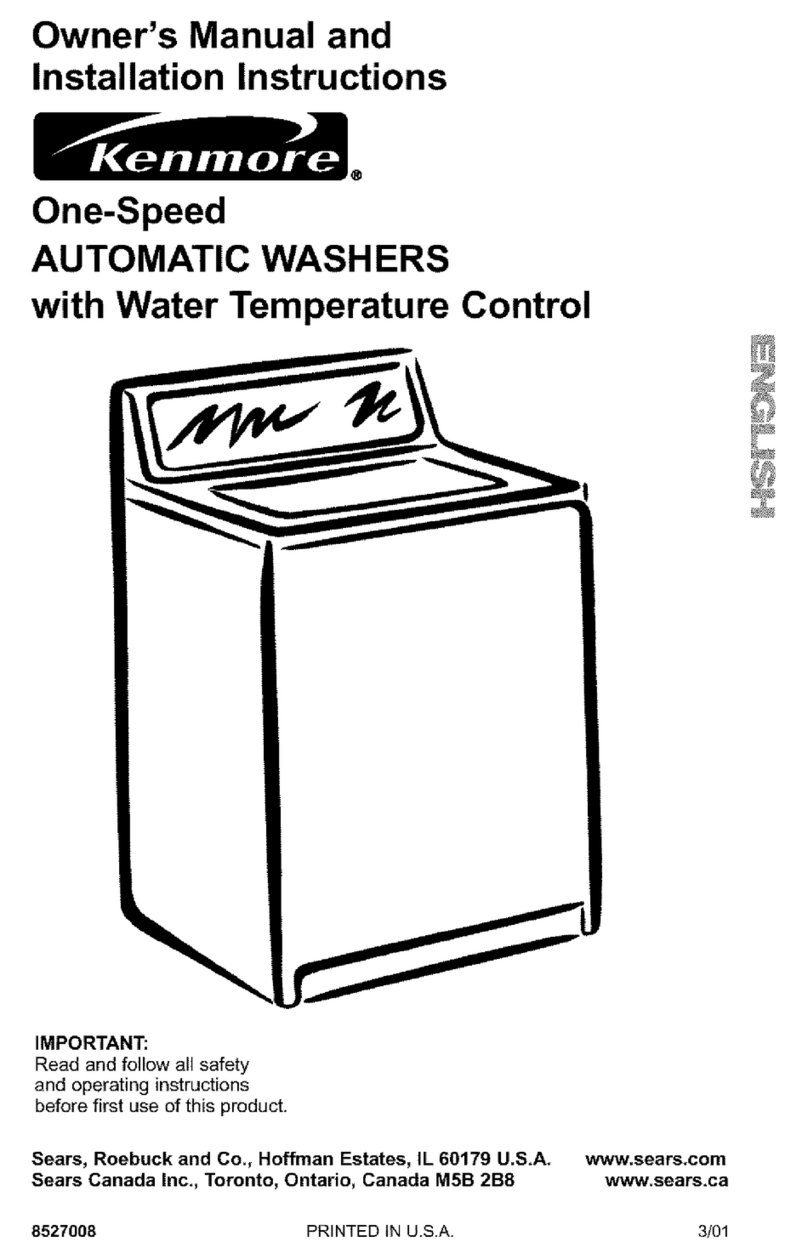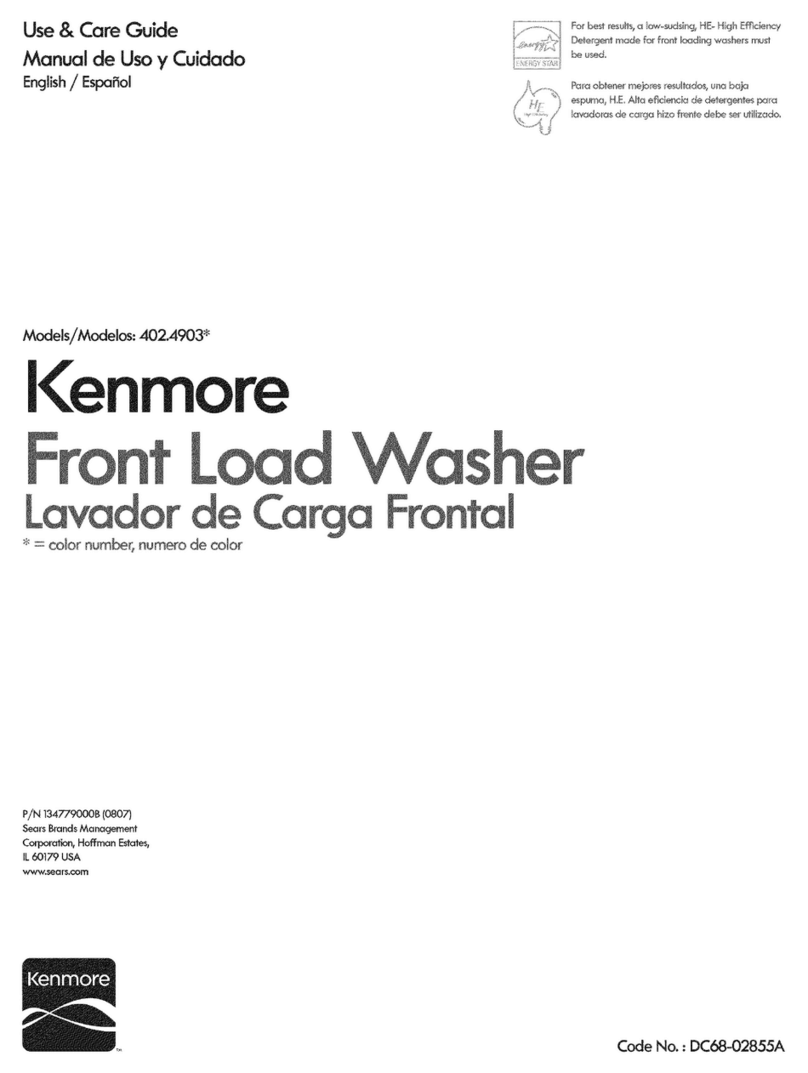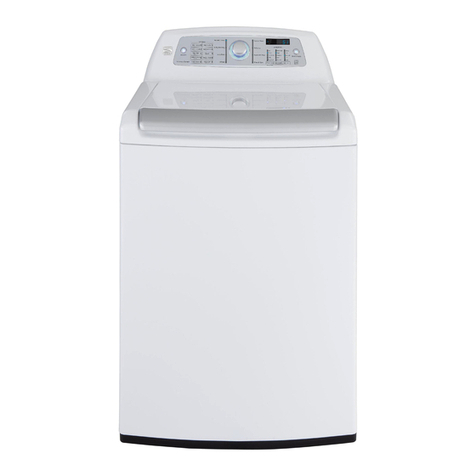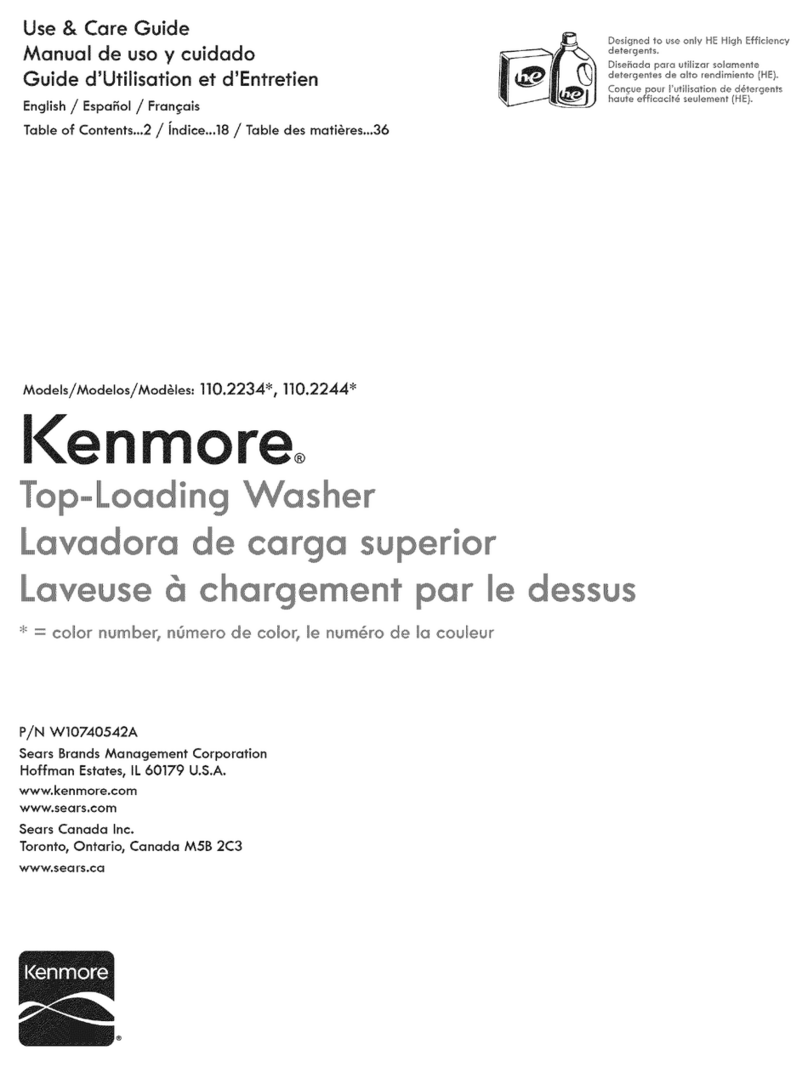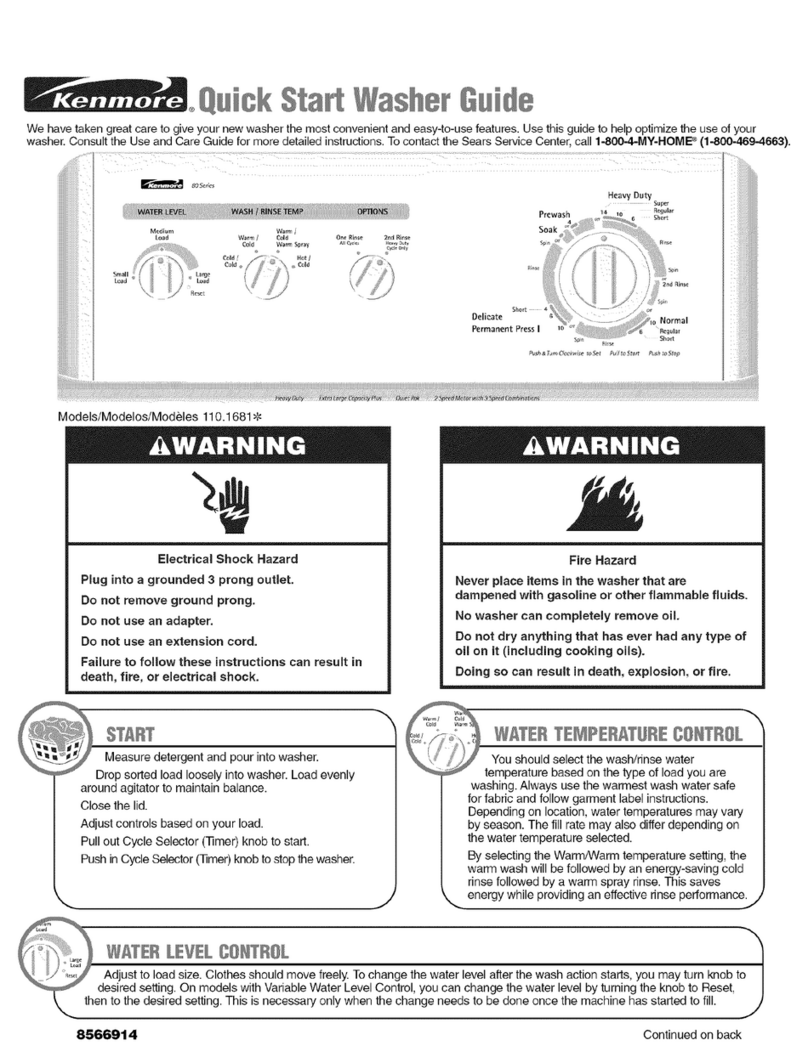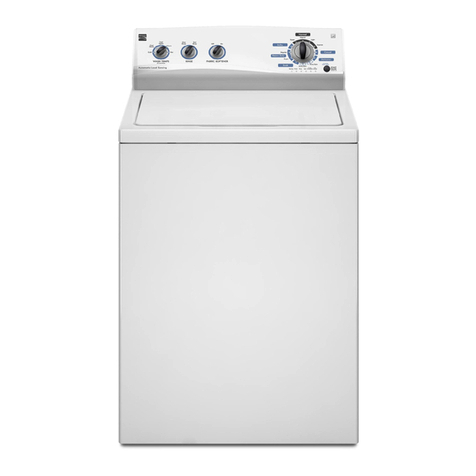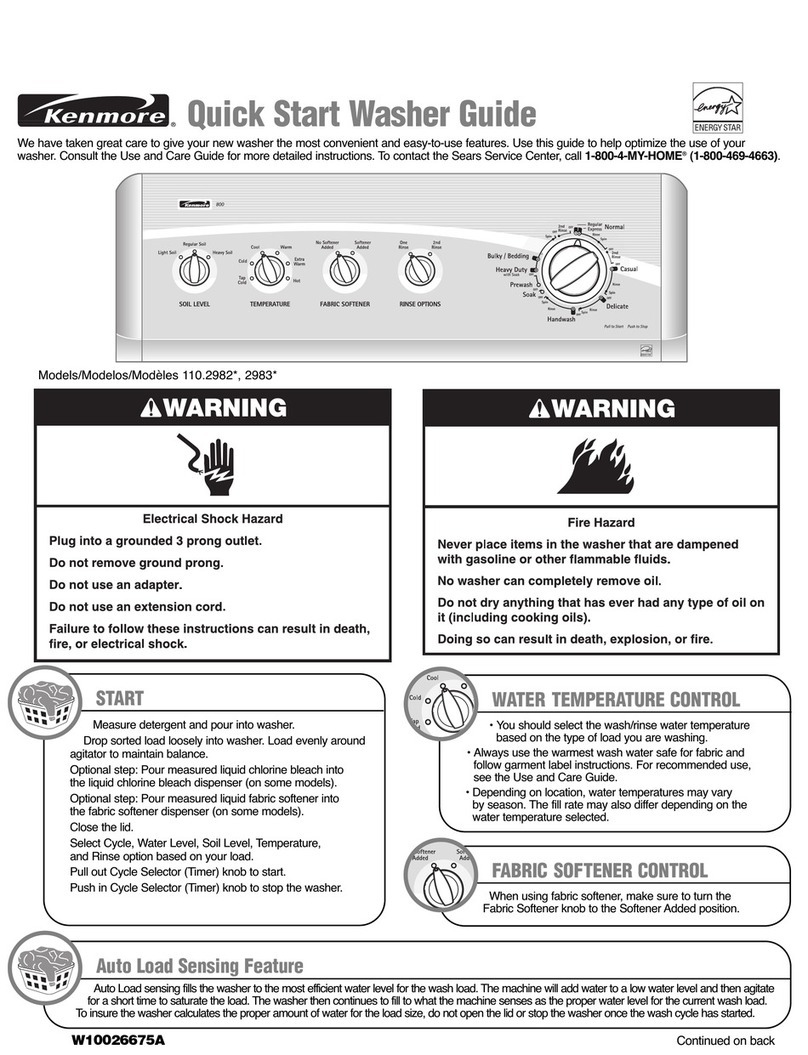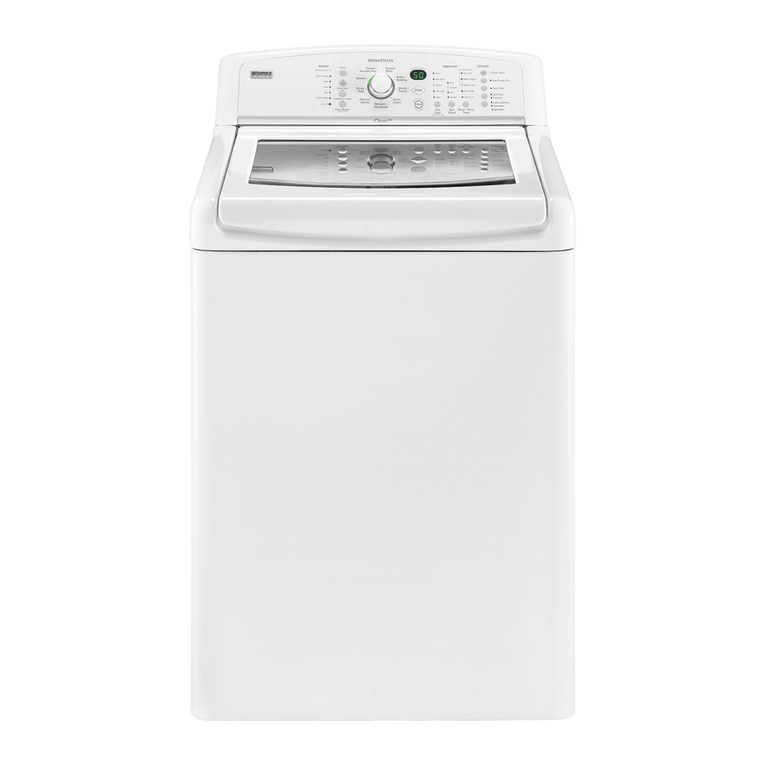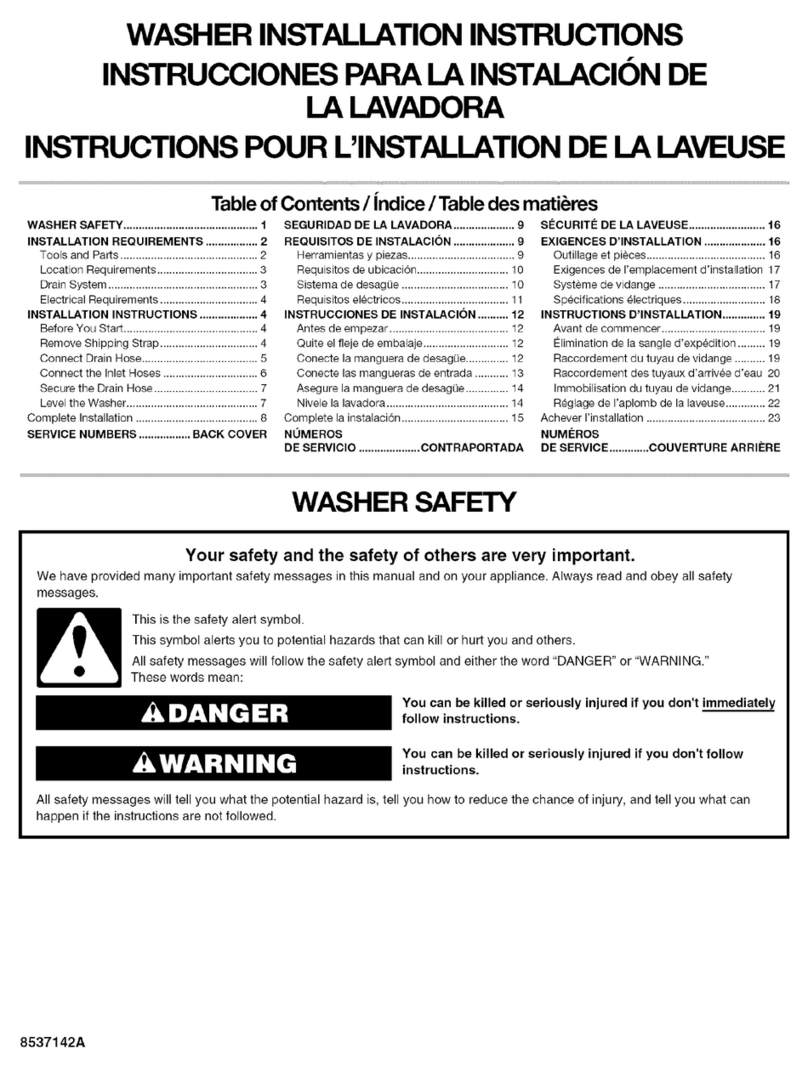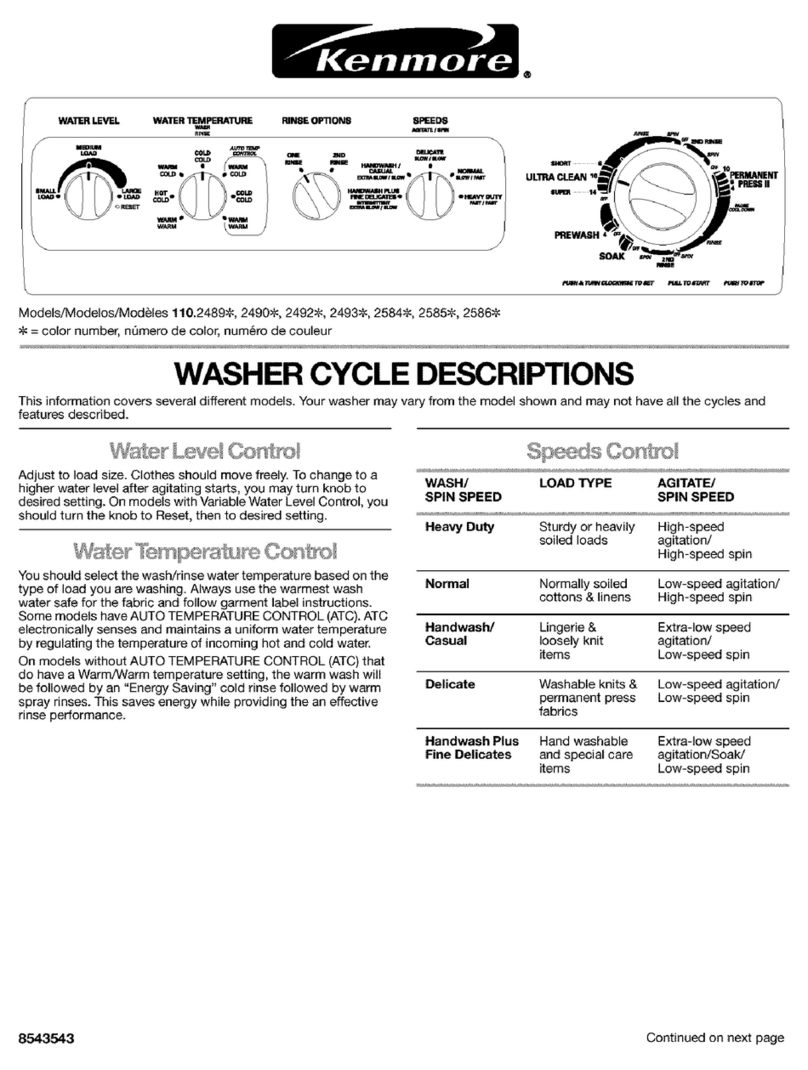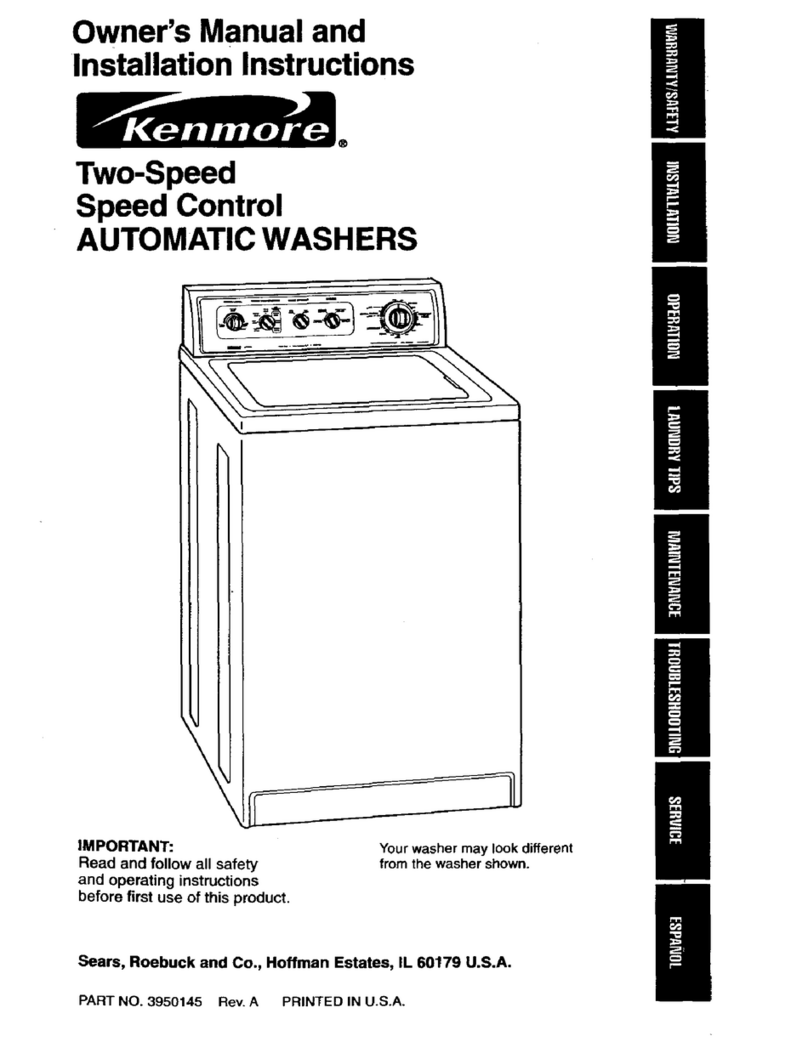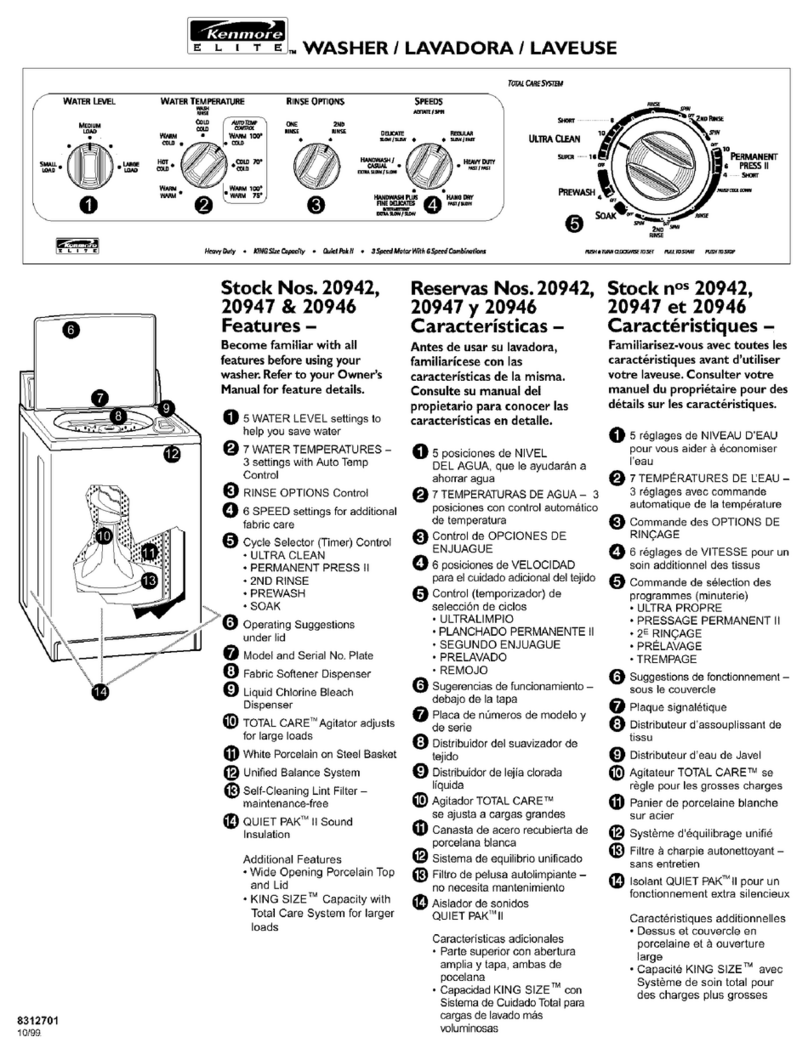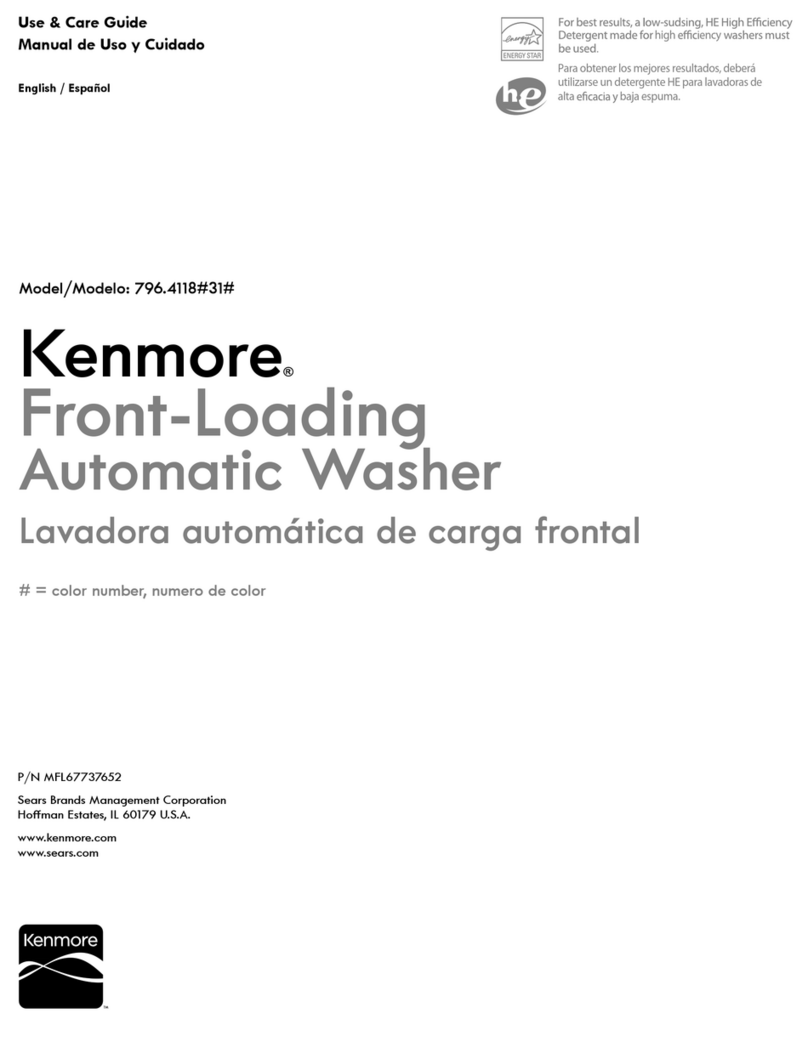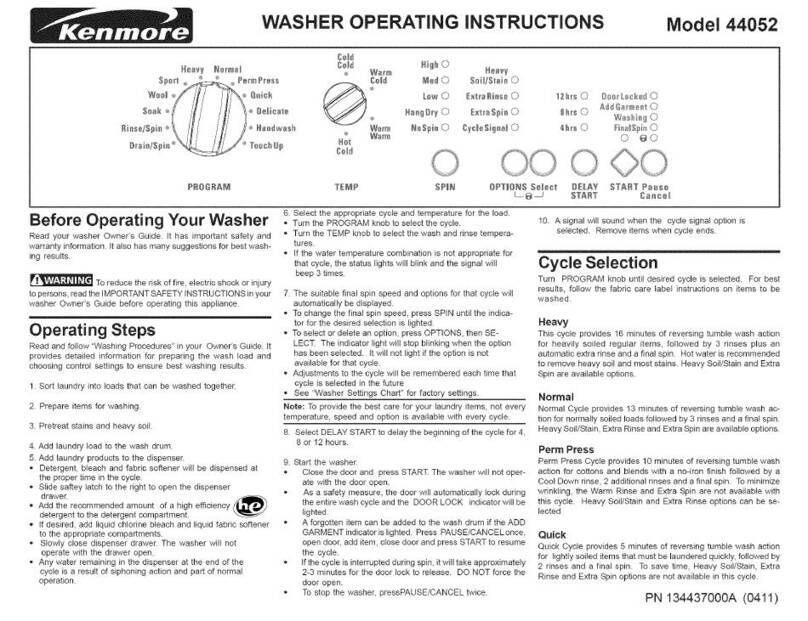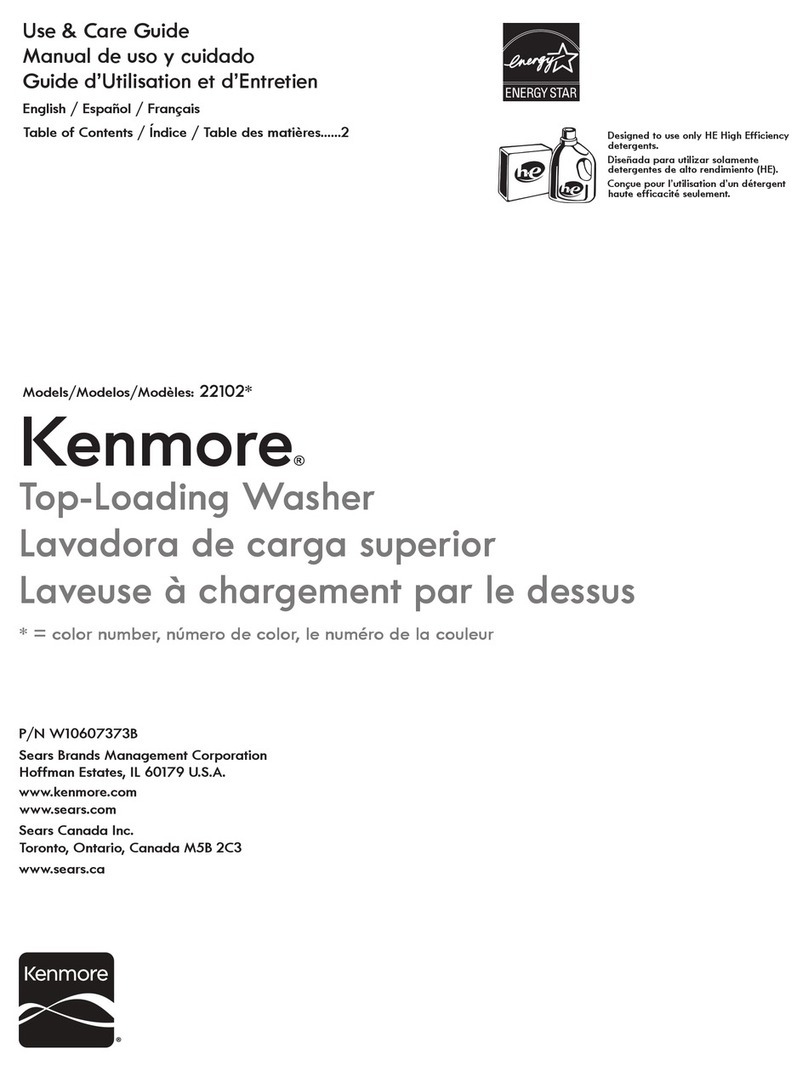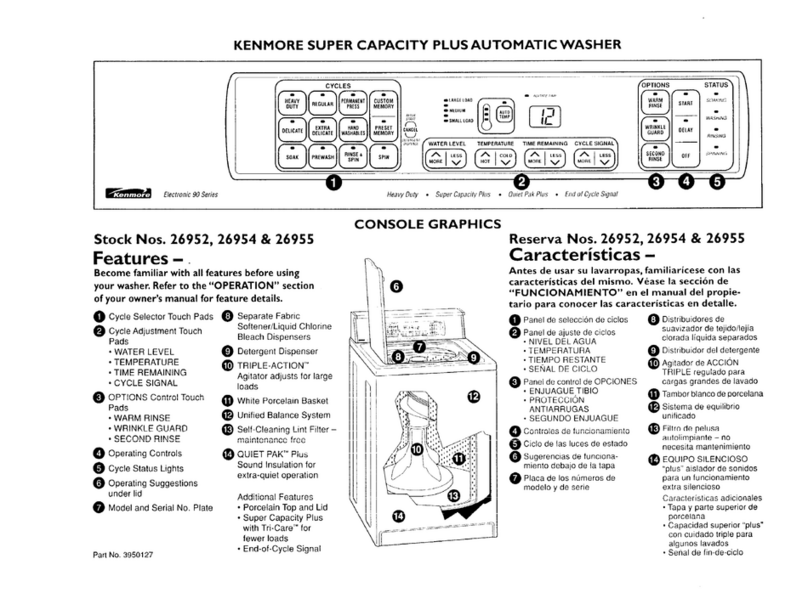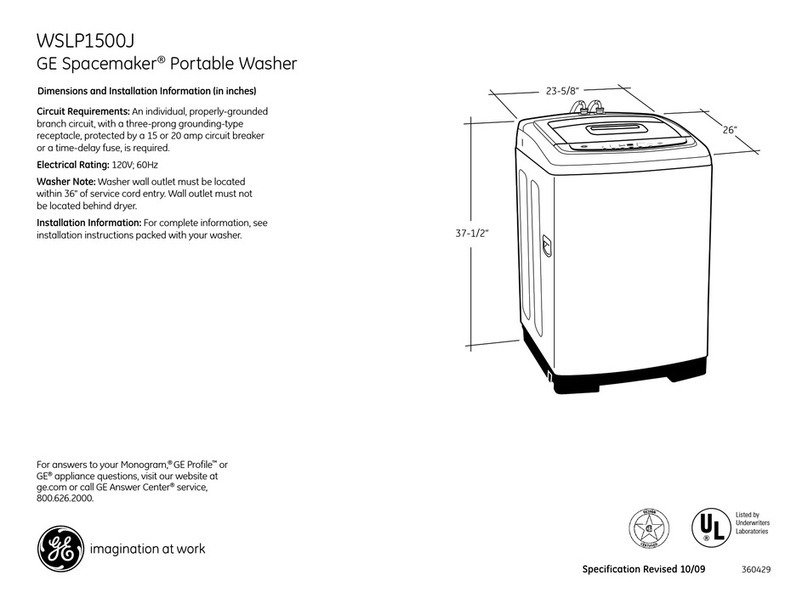INSTALLATION
1. Run some water from the hot
and cold faucets to flush the
water lines and remove
particles that might clog up the
water valve screens.
2. Remove the inlet hoses and
rubber washers from the plastic
bag and install the rubber
washers in each end of the inlet
hoses.
3. (90° elbow end) Carefully connect
the inlet hose marked "HOT" tothe
outside "H" outlet ofthe water valve.
Tighten by hand, then tighten
another 2/3 turn with pliers.
Carefully connect the other inlet hose to the inside "C"
outlet of the water valve. Tighten by hand, then tighten
another 2/3 turn with pliers.
Do not crossthread or over-tighten these connections.
4. Connect the inlet hose ends to the HOT and COLD
water faucets tightly by hand, then tighten another 2/3
turn with pliers. Turn the water on and check for leaks.
NOTE: Use only new hoses provided with this unit.
5. Carefully move the washer to its final location. Rollers
on the rear of the washer allow for easy movement in
undercounter installations. Gently lift up on the front of
the washer and slide back.
NOTE: Lifting up more than 1/8" will engage the rear
legs. Do not use the dispenser drawer or door
to liftwasher.
6. With the washer in its final position, place a level on
top of the washer (if an undercounter installation, no
rocking of the washer should exist). Adjust the front
leveling legs up or down to ensure the washer is
resting solid. Turn the lock nuts on each leg up towards
the base of the washer and snug with a wrench.
NOTE: Keep the leg extension at a minimum to
prevent excessive vibration. The farther out the
legs are extended the more the washer will
vibrate.
The washer is designed to operate resting on its rear
rollers. If the floor is not level or is damaged, the rear
leveling legs may have to be extended. For
undercounter installations, rear leg adjustment is
accessible through the front service panel.
7. Form a U shape on the end of the drain hose with the
hose pointed toward the drain. Place in a laundry tub or
standpipe and secure with the cable tie provided in the
enclosure package.
Cable Tie
Cable
Tie
Cable
Tie
NOTE: If the drain hose is placed in a standpipe
without forming a U shape, a siphoning action
could occur, There must be an air gap around
the drain hose. Asnug hose fit can also cause
a siphoning action.
8. Plug the power cord into a grounded outlet.
NOTE: Check to ensure the power is off at a circuit
breaker/fuse box before plugging the power
cord into an outlet.
9. Turn on the power at a circuit breaker/fuse box,
10. Read the Operating Instructions and Owner's Guide
provided with the washer. They contain valuable and
helpful information that will save you time and money.
11. Run the washer through a complete cycle. Check for
water leaks and proper operation.
12. If your washer does not operate, please review the
=Avoid Service Checklist" in your Owner's Guide before
calling for service,
13. Place these instructions in a location near the washer
for future reference.
NOTE: A wiring diagram is located inside the washer on
the service panel.
REPLACEMENT PARTS
If replacement parts are needed for your washer, call
Sears Parts and ServiceToll Free Number
1-800-366-PART (1-800-366-7278).
Destroy the carton and plastic bags
after the washer is unpacked. Children mightuse them
for play.Cartons covered with rugs, bedspreads, or
plasticsheets can become airtight chambers causing
suffocation. Place all materials ina garbage container
or make materials inaccessible to children.
p.,w-'l;t_H_[LIThe instructions in this manual and all
other literature included with this washer are not meant
to cover every possible condition and situation that may
occur. Good safe practice and caution MUST be applied
when installing, operating and maintaining any
appliance.
IMaximum benefits and enjoyment are achieved when
all the Safety and Operating instructionsare
understood and practiced as a routinewith your
laundering tasks.
5
